G.V() is now compatible with FalkorDB

Introduction
We are excited to announce that FalkorDB is now fully compatible with G.V().
FalkorDB is a versatile graph database that excels in powering GenAI use cases. It’s ideal for applications such as GraphRAG, agentic memory, chatbots, fraud detection and cyber security – all of this while boasting multi-tenancy support, ultra-low latency, flexible horizontal scaling, vector search and highly efficient memory usage.
The FalkorDB platform comes with GraphRAG-SDK, CodeGraph, and its own in-browser graph visualization. G.V() contributes to the FalkorDB ecosystem by providing advanced graph visualization, Cypher querying, data exploration features, and many more.
We’ve compiled below some, but not all, of the main features of this integration. Let’s get into it:
From scratch to graph in less than a minute
Just like with every other database supported in G.V(), connecting to your FalkorDB instance is a breeze!
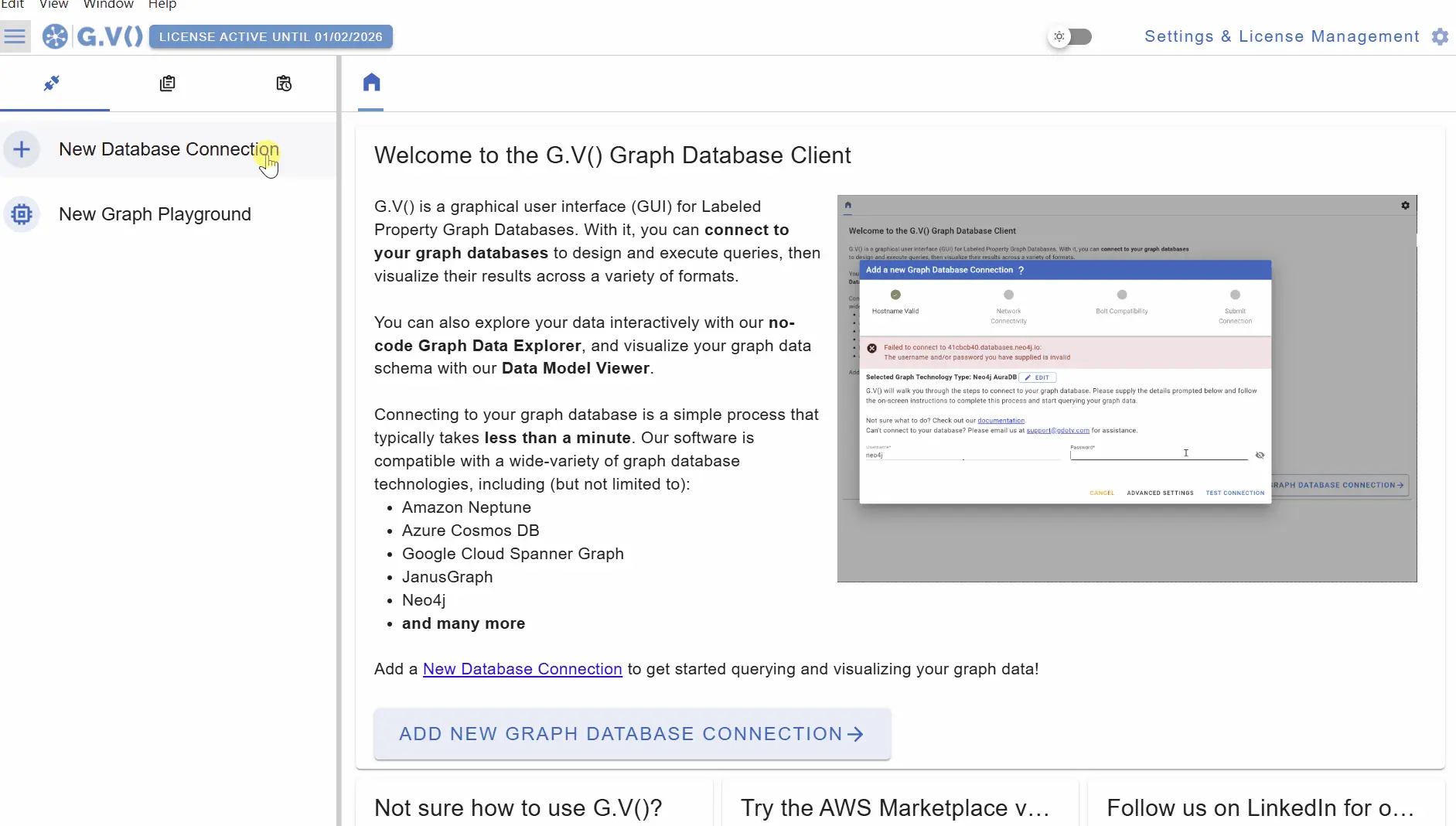
All you need to do is enter the corresponding details of your Docker container, select which graph you wish to use, and you’re good to go! There’s no limit to the amount of concurrent instances of FalkorDB you can have connected on G.V()!
Analyze your Cypher query results with just a few clicks
FalkorDB has an emphasis on speed, and so do we! This makes turning your Cypher queries into graph visualizations lightning fast. G.V() provides you with the ability to tailor the look and feel of your graph output with a variety of layout options, as well as filtering and customization features.
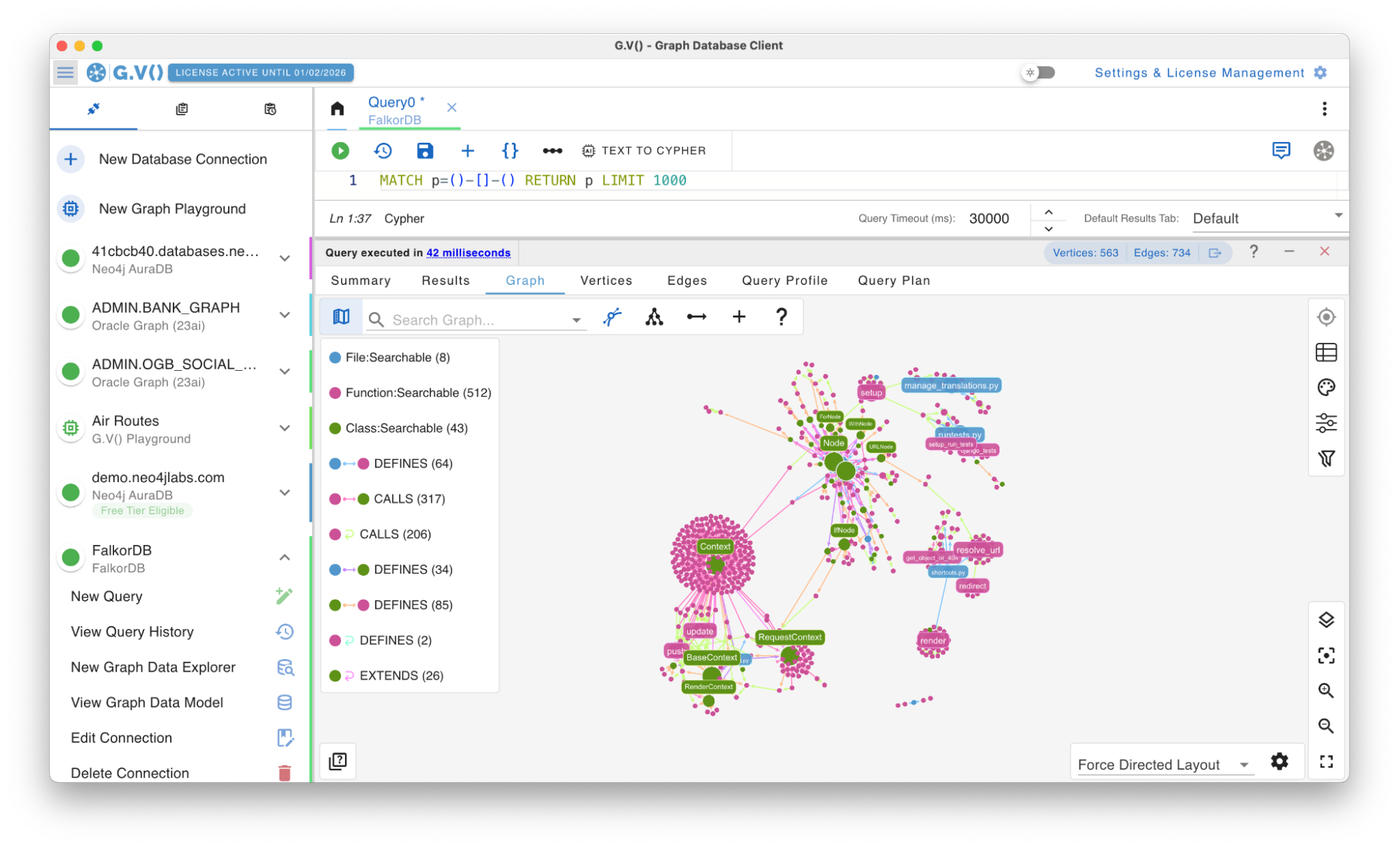
You can have multiple queries open in different tabs, along with other tools, like Data Explorers and Data Models (mentioned below), from any and all connections you may have open. You can even use any combination of these side by side using our split tabs feature.
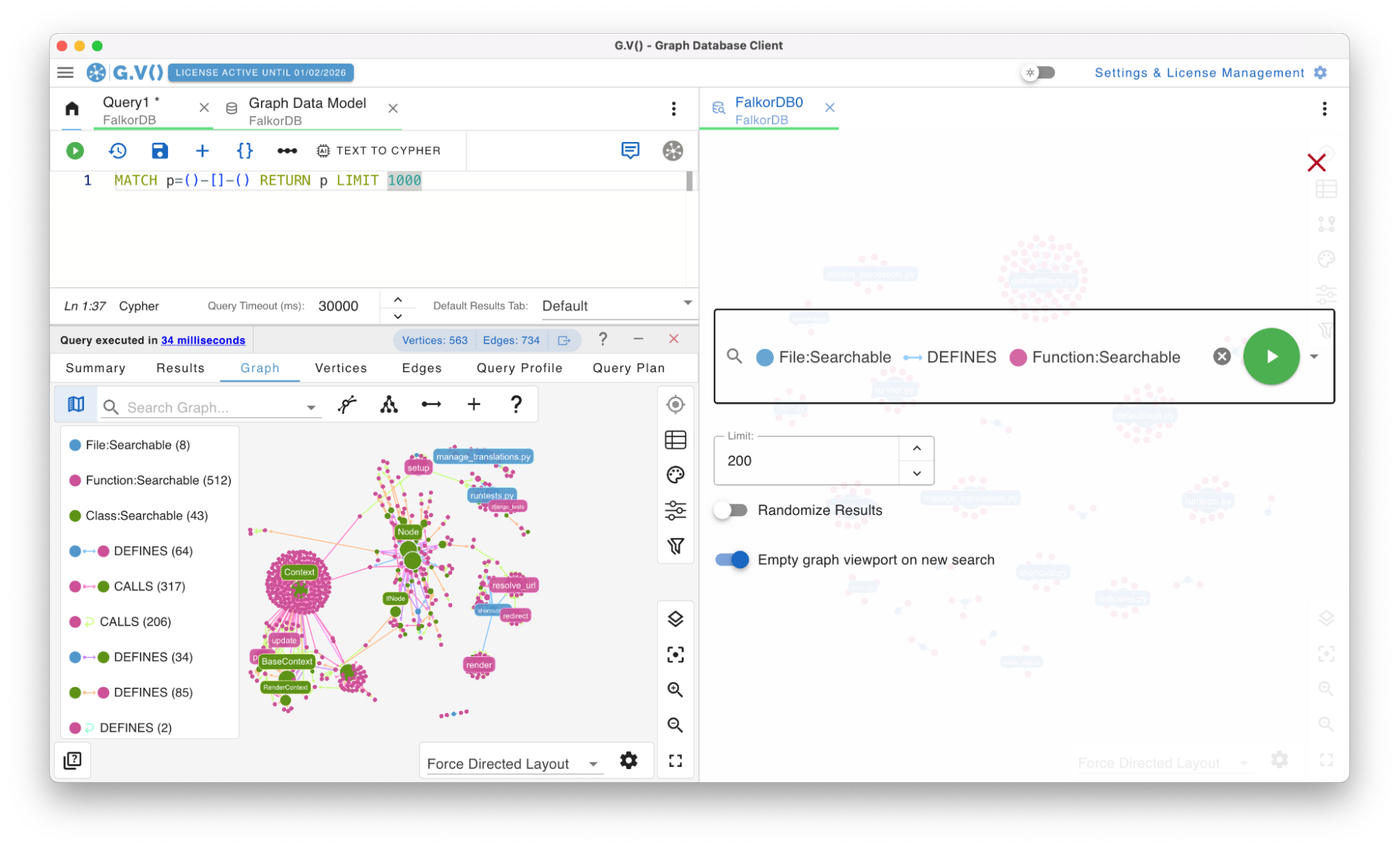
Numerous other formats are available in G.V() to display your query results, which may suit certain use cases better than the graph display. These include:
- JSON output
- Tabular results for nodes and edges (separately, or together)
- Results summary (server info, database statistics, etc.)
You can also inspect the profile plan and explain plan of your Cypher queries in just one click, allowing you to inspect, debug, optimize and test your Cypher statements all in one place.
Visualize your schema
G.V() automatically builds an understanding of your FalkorDB graph’s internal schema and displays it as an interactive entity-relationship diagram, giving you a quick reference point to the structure of your graph – just one click away.
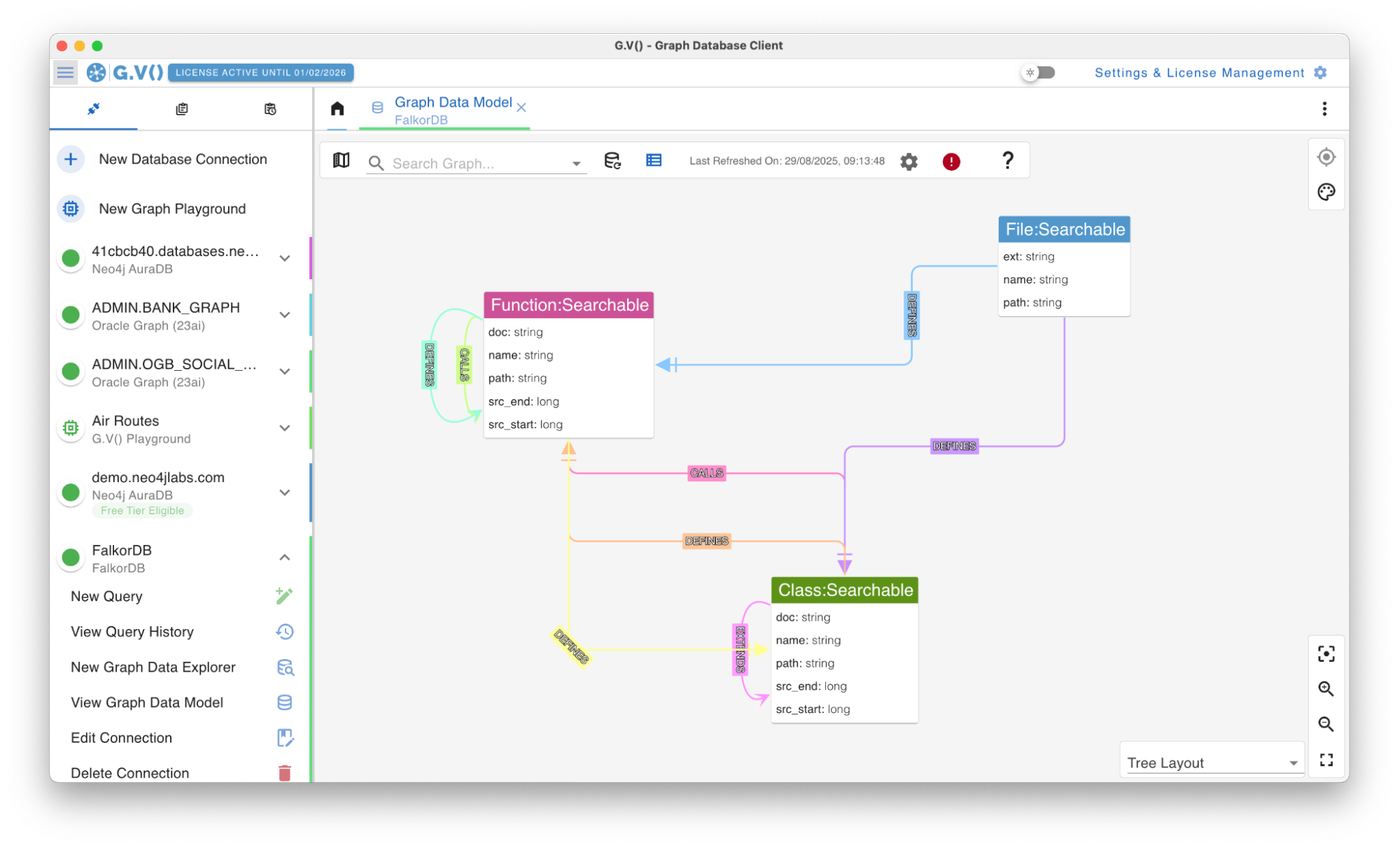
Due to the flexible nature of graph databases, keeping track of your data model can be a challenge as changes are made. However, G.V() conveniently updates automatically whenever your data model is modified, keeping things accurate and synchronized between all team members.
No-code FalkorDB graph exploration
Don’t want to write Cypher queries? No problem! Simply create a path out of available vertices and edges from your data model using our intuitive new Path Search tool, then hit the play button.
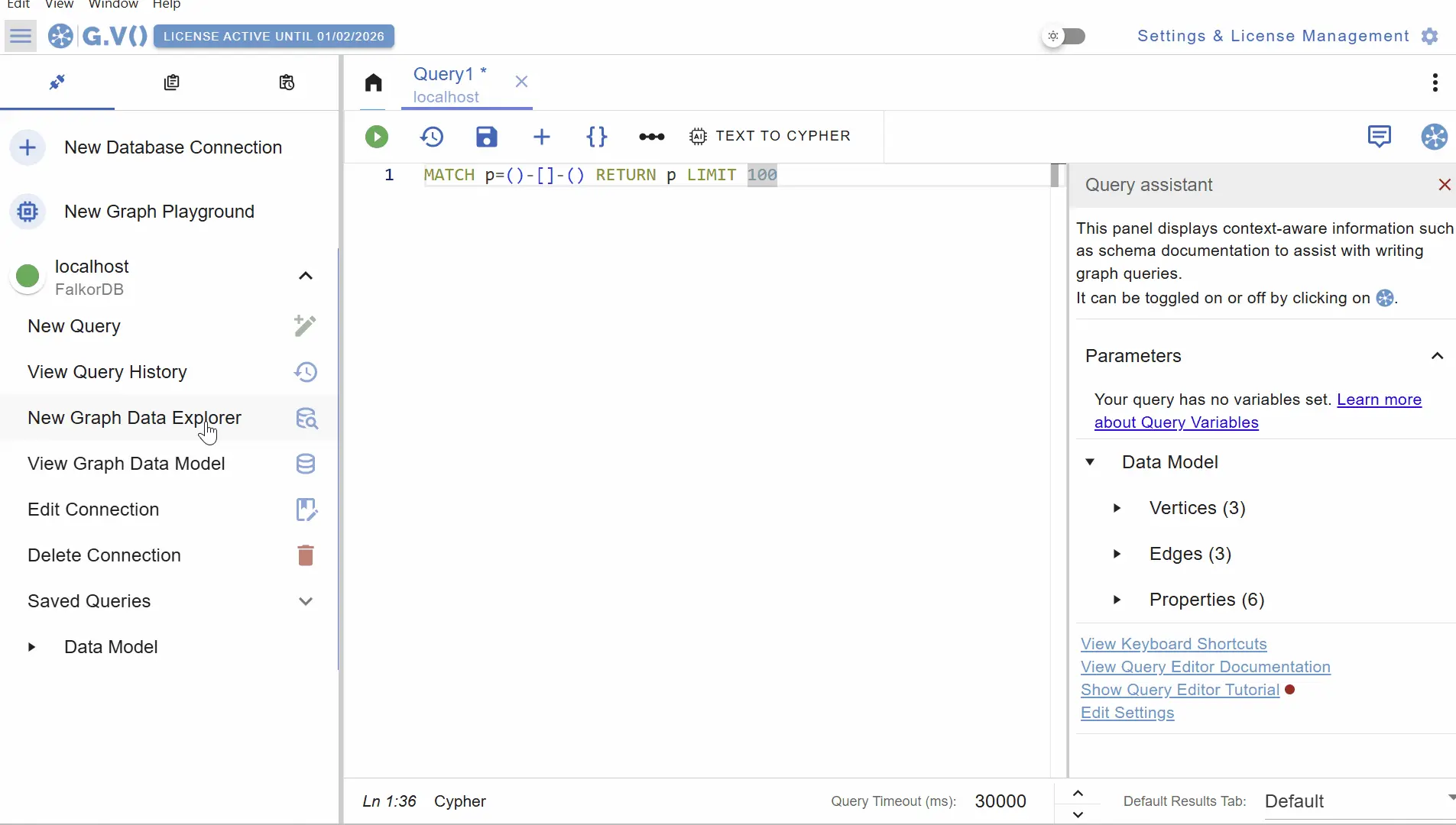
The G.V() Data Explorer will turn your path into a query behind the scenes, and turning the results into a fully interactive graph visualization to explore, showcase and analyze your data.
Conclusion
We’re delighted to finally bring support to FalkorDB. G.V() is the perfect graph database IDE to supercharge your FalkorDB developer experience. With G.V(), you’ll be setup with advanced graph visualization, querying, reporting and data exploration features for your FalkorDB instance in just a couple of minutes. So what are you waiting for?
And if you haven’t checked out FalkorDB yet, head on over to their website to learn more.
![The Weekly Edge: Linkurious Gets Acquired, CDL Wraps, Graph Benchmarks for TinkerPop & More [5 December 2025] The Weekly Edge: Linkurious Gets Acquired, CDL Wraps, Graph Benchmarks for TinkerPop & More [5 December 2025]](https://gdotv.com/wp-content/uploads/2025/12/linkurious-acquisition-connected-data-london-tinkerpop-benchmark-weekly-edge-5-december-2025.png)
![What Went Down at Connected Data London 2025 [Recap & Reflections] What Went Down at Connected Data London 2025 [Recap & Reflections]](https://gdotv.com/wp-content/uploads/2025/12/gdotv-recap-connected-data-london-conference-2025.png)
![The Weekly Edge: Baroque Org Charts, AI & Graph Visualization, Graph DB Demos & More [28 November 2025] The Weekly Edge: Baroque Org Charts, AI & Graph Visualization, Graph DB Demos & More [28 November 2025]](https://gdotv.com/wp-content/uploads/2025/11/weekly-edge-graph-visualization-28-november.png)